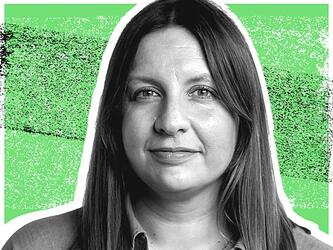Searching for the small clues
Martin Lindstrom has forged a career as a brand-building expert, sharing his techniques and insight into understanding consumer behaviour. As the author of many books, he has explored the rise of online retailing, psychological persuasion practices used by companies, how the senses can be used in marketing, and shopping behaviour – often involving large-scale research projects.
In his latest book, Small data: the tiny clues that uncover huge trends, he shares his method of using ‘small data’ to gain consumer insight, as a counter to what he sees as the over prevalence of big data. Lindstrom believes senior managers are becoming too reliant on reading data – sitting in front of a screen, looking at statistics and trying remotely to understand consumers’ emotions.
“Some of the best business leaders have one thing in common: they have a good instinct – and that only appears when you get your hands dirty and start to observe and understand consumers. When you read numbers, you don’t build your instinct,” says Lindstrom.
He argues that one of the risks with big data is that it “deviates” businesses, as it has gained too much power. “Big data is all about millions of data points, but you can’t just dive in and extract a conclusion from it; you have to have a hypothesis to work with and that hypothesis is usually based on small data.”
Lindstrom cites the example of a bank’s big data showing significant churn and, as a result, it looking at interest rates as a way of keeping people. When the bank actually talked to customers, however, it became clear the churn was a result of people moving account after a divorce.
Zooming In
“In the past, I’ve done a lot of quantitative research and I’ve also looked at neuromarketing ideas, and I realised that you gain some understanding – you peel the onion, but you never really get to the core,” explains Lindstrom. “I’ve realised that some of the biggest innovations come from observing the right way and picking up the small data. So I decided to tune that skill-set of observing people and asking questions to a fine degree, so we can zoom in much more.”
I suggest this is essentially a championing of ethnographic market research practices, but Lindstrom says there are differences.
“Ethnographics isn’t interacting with consumers, it’s observing them, and the methodology I’m using is three things in one: observing, interacting and also brainstorming with consumers – so you constantly extract new concepts and information out of the process.”
Lindstrom is also looking at various sources of small data, including people’s habits on social media, and says the process has evolved as he’s implemented it, learned from his mistakes, and returned to how he’s picked up the small data to improve the format.
“I’ve done it 2,000 times, so you get quite sophisticated in how you interact with people. Now [I can gain the insight] with about 20 respondents, but if you’re new you’d need 40-50 people. Sometimes we do more than 120, but we’re doing it more to please the client so they feel secure. It’s iterative – you can’t do it in parallel – so you build on the hypothesis.”
The skill then is in identifying the ‘clues’ that lead to brand insight, as opposed to irrelevant ones.
“In the beginning you have a tonne of clues in small data points that might seem intriguing, but after 10 or 12 consumer insights visits you will notice a clear pattern appearing – and it’s often based on the first culture impression you had linked to the hypothesis,” Lindstrom explains.
Culture Glasses
One of the methods Lindstrom uses to access the emotional side of small data is to push himself out of his comfort zone, to see a different point of view and to “reset my ‘culture glasses’”.
He spends time with people such as hairdressers, football coaches and church leaders, and talks to them about how they see the world – “It’s usually a mismatch to the community view, in an extreme degree, and then you can identify the imbalances”, he says.
“It gives you the first rough cut to how you approach a home and, once in the home, you continue drilling down on those imbalances. It’s the methodology you do to remove your culture glasses.”
While Lindstrom doesn’t agree with the over-reliance on big data, he does believe the ideal is for brands to adopt a combined use of big and small data.
“Small data is all about causation and big data about correlation,” he says. “We have to start with one, and people tend to think we have to start with correlation – but, actually, we have to start with causation.
“So find the imbalance in society, then the imbalances in the home, and then the imbalances in the individual.”
From the scattered observations and research comes the hypothesis or concept, and then big data can verify the scale of it.
Reference:
Small Data: the tiny clues that uncover huge trends by Martin Lindstrom is published by John Murray Learning.

We hope you enjoyed this article.
Research Live is published by MRS.
The Market Research Society (MRS) exists to promote and protect the research sector, showcasing how research delivers impact for businesses and government.
Members of MRS enjoy many benefits including tailoured policy guidance, discounts on training and conferences, and access to member-only content.
For example, there's an archive of winning case studies from over a decade of MRS Awards.
Find out more about the benefits of joining MRS here.














0 Comments